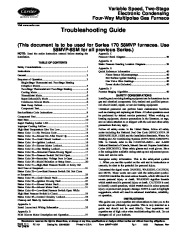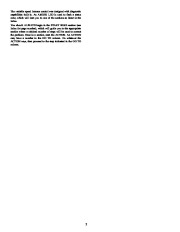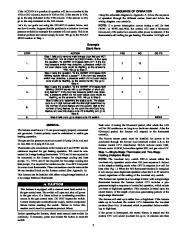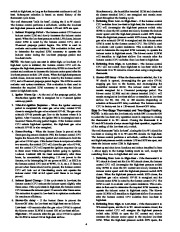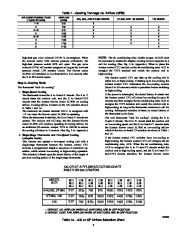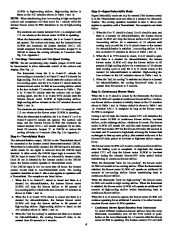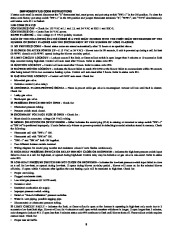| Categories | Carrier HVAC Manuals |
|---|---|
| Document Type | Heating, Ventilating and Air Conditioning Manual Free Download. HAVC Operator's Instruction Manual. |
| Tags | Carrier 58MVP |
| Download File |
|
| Language | English |
| Product Brand | Carrier. Support Phone Number: In North America, please call 1-800-CARRIER for immediate customer assistance from 8:00a -5:00p (EST) weekdays , Heating, Ventilating and Air Conditioning - HVAC |
| Document File Type | |
| Publisher | corp.carrier.com |
| Wikipedia's Page | Carrier Corporation |
| Copyright | Attribution Non-commercial |
Variable Speed, Two-Stage Electronic Condensing Four-Way Multipoise Gas Furnace Visit www.carrier.com Troubleshooting Guide (This document is to be used for Series 170 58MVP furnaces. Use 58MVP-8SM for all previous Series.) NOTE: Read the entire instruction manual before starting the installation. TABLE OF CONTENTS Safety Considerations .1 Instructions .1 General 3 Sequence of Operation .3 Single-Stage Thermostat and Two-Stage Heating (Adaptive Mode) .3 Two-Stage Thermostat and Two-Stage Heating 4 Cooling Mode .5 Thermidistat Mode 6 Super-Dehumidify Mode 6 Continuous Blower Mode .6 Heat Pump Defrost .7 Component Test 7 Service/Status Code Instructions .8 Component Test .9 Start Here 10 Rapid Flashing Amber LED 11 Improper Cooling Airflow .12 High-Heat Temperature Rise Too Low .13 Status Code 11–No Previous Code .14 Status Code 12–Blower On After Power Up 14 Status Code 13–Limit Circuit Lockout .15 Status Code 14–Ignition Lockout 16 Status Code 15–Blower Motor Lockout 16 Status Code 21–Gas Heating Lockout 16 Status Code 22–Abnormal Flame-Proving Signal 17 Status Code 23–Pressure Switch Did Not Open .17 Status Code 24–Secondary Voltage Fuse Is Open .18 Status Code 25–Model Selection or Setup Error 20 Status Code 31–High-Heat Pressure Switch or Relay Did Not Close or Reopened 21 Status Code 32–Low-Heat Pressure Switch Did Not Close or Reopened 23 Status Code 33–Limit Circuit Fault 24 Status Code 34–Ignition Proving Fault .27 Status Code 41–Blower Motor Fault .29 Status Code 42–Inducer Motor Fault 31 Status Code 43–Low-Heat Pressure Switch Open While High-Heat Pressure Switch is Closed 33 Status Code 45–Control Circuitry Lockout .34 Cleanup and Start-Up Instructions 34 Appendix A Board Layout and Wiring Schematics 35 Appendix B ECM Blower Motor Description and Operation .37 Appendix C Pressure Check Diagram 38 Appendix D Static Pressure Reading Location Diagrams .38 Appendix E Quick Reference Information 40 Flame Sensor Microamperage .40 Hot Surface Igniter Reading .40 Gas Valve Ohm Readings .40 Power choke (Inductor) .40 Appendix F Furnace Staging Algorithm 40 SAFETY CONSIDERATIONS Installing and servicing heating equipment can be hazardous due to gas and electrical components.
Heating, Ventilating and Air Conditioning User Manual Free Download. HAVC Operator’s Manual. Gas Furnace and AC Free Instruction Manual Download PDF.
Only trained and qualified personnel should install, repair, or service heating equipment. Untrained personnel can perform basic maintenance functions such as cleaning and replacing air filters. All other operations must be performed by trained service personnel. When working on heating equipment, observe precautions in the literature, on tags, and on labels attached to or shipped with the unit and other safety precautions that may apply. Follow all safety codes. In the United States, follow all safety codes including the National Fuel Gas Code (NFGC) NFPA 54 2002/ANSI Z223.1-2002 and the Installation Standards, Warm Air Heating and Air Conditioning Systems (NFPA 90B) ANSI/NFPA 90B. In Canada, refer to the CAN/CGA-B/49.1- and .2-M00 National Standard of Canada, Natural Gas and Propane Installation Codes (NSCNGPIC). Wear safety glasses and work gloves. Have a fire extinguisher available during start-up and adjustment procedures and service calls. Recognize safety information. This is the safety-alert symbol .When you see this symbol on the unit and in instructions or manuals, be alert to the potential for personal injury. Understand the signal words DANGER, WARNING, CAUTION, and NOTE. These words are used with the safety-alert symbol. DANGER identifies the most serious hazards, which will result in severe personal injury or death. WARNING signifies hazards which could result in personal injury or death. CAUTION is used to identify unsafe practices, which would result in minor personal injury or product and property damage. NOTE is used to highlight suggestions, which will result in enhanced installation, reliability, or operation. INSTRUCTIONS This guide uses your expertise and observations to lead you to the trouble spot as efficiently as possible. This is only intended as a guide and should not be used blindly. Your experience and expertise are of high value when troubleshooting this unit. Do not disregard all of your instincts.
